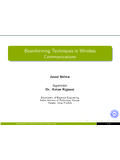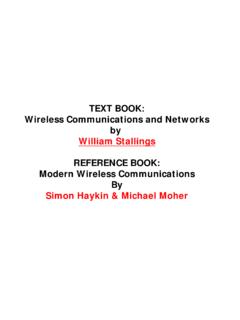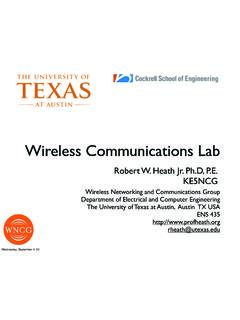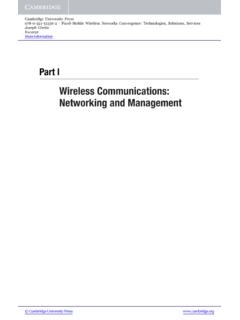Transcription of A Tutorial on UAVs for Wireless Networks: …
1 A Tutorial on UAVs for Wireless Networks: Applications, Challenges, and Open ProblemsMohammad Mozaffari1, Walid Saad1, Mehdi Bennis2, Young-Han Nam3, and M erouane Debbah41 Wireless @VT, Electrical and Computer Engineering Department, Virginia Tech, VA, USA, - Centre for Wireless Communications, University of Oulu, Finland, Email: & 5G Mobility Innovations Lab, Samsung Research America, Richardson, TX, Email: and Algorithmic Sciences Lab, Huawei France R & D, Paris, France, and CentraleSupelec,Universite Paris-Saclay, Gif-sur-Yvette, France, Email: The use of flying platforms such as unmanned aerialvehicles (UAVs), popularly known as drones, is rapidly particular, with their inherent attributes such as mobility,flexibility, and adaptive altitude, UAVs admit several key potentialapplications in Wireless systems.
2 On the one hand, UAVs canbe used as aerial base stations to enhance coverage, capacity,reliability, and energy efficiency of Wireless networks. On theother hand, UAVs can operate as flying mobile terminals withina cellular network . Such cellular-connected UAVs can enableseveral applications ranging from real-time video streaming toitem delivery. In this paper, a comprehensive Tutorial on thepotential benefits and applications of UAVs in Wireless commu-nications is presented. Moreover, the important challenges andthe fundamental tradeoffs in UAV-enabled Wireless networks arethoroughly investigated. In particular, the key UAV challengessuch as three-dimensional deployment, performance analysis,channel modeling, and energy efficiency are explored alongwith representative results.
3 Then, open problems and potentialresearch directions pertaining to UAV communications are intro-duced. Finally, various analytical frameworks and mathematicaltools such as optimization theory, machine learning, stochasticgeometry, transport theory, and game theory are described. Theuse of such tools for addressing unique UAV problems is alsopresented. In a nutshell, this Tutorial provides key guidelineson how to analyze, optimize, and design UAV-based wirelesscommunication INTRODUCTION ANDOVERVIEW ONUAVSU nmanned aerial vehicles (UAVs), commonly known asdrones, have been the subject of concerted research over thepast few years [1] [5], owing to their autonomy, flexibility,and broad range of application domains.
4 Indeed, UAVs havebeen considered as enablers of various applications that in-clude military, surveillance and monitoring, telecommunica-tions, delivery of medical supplies, and rescue operations [1],[3], and [6] [17]. However, such conventional UAV-centricresearch has typically focused on issues of navigation, control,and autonomy, as the motivating applications were typicallyrobotics or military oriented. In contrast, the communicationchallenges of UAVs have typically been either neglected orconsidered as part of the control and autonomy MotivationThe unprecedented recent advances in drone technologymake it possible to widely deploy UAVs, such as drones, smallaircrafts, balloons, and airships for Wireless communicationpurposes [9], [18] [21].
5 In particular, if properly deployedand operated, UAVs can provide reliable and cost-effectivewireless communication solutions for a variety of real-worldscenarios. On the one hand, drones can be used as aerialbase stations (BSs) that can deliver reliable, cost-effective,and on-demand Wireless communications to desired areas. Onthe other hand, drones can function as aerial user equipments(UEs), known ascellular-connected UAVs, in coexistencewith ground users ( , delivery or surveillance drones). Thisexciting new avenue for the use of UAVs warrants a rethinkingof the research challenges withwireless communications andnetworkingbeing the primary focus, as opposed to control particular, when UAVs are used as flying, aerial basestations, they can support the connectivity of existing ter-restrial Wireless networks such as cellular and broadbandnetworks.
6 Compared to conventional, terrestrial base stations,the advantage of using UAVs as flying base stations is theirability to adjust their altitude, avoid obstacles, and enhance thelikelihood of establishing line-of-sight (LoS) communicationlinks to ground users (see Tables III and IV for a detailedcomparison between UAVs and ground BSs). Indeed, owing totheir inherent attributes such as mobility, flexibility, and adap-tive altitude, UAV base stations can effectively complementexisting cellular systems by providing additional capacity tohotspot areas and by delivering network coverage in hard toreach rural areas. Another important application of UAVs isin Internet of Things (IoT) scenarios [22] [26] whose devicesoften have small transmit power and may not be able tocommunicate over a long range.
7 UAVs can also serve aswireless relays for improving connectivity and coverage ofground Wireless devices and can also be used for surveillancescenarios, a key use case for the IoT. Last, but not least,in regions or countries where building a complete cellularinfrastructure is expensive, deploying UAVs becomes highlybeneficial as it removes the need for expensive towers andinfrastructure an industry perspective, key real-world example ofrecent projects that employ drones for Wireless connectivityincludes Google s Loon project. Within the scope of [ ] 17 Mar 2019practical deployments, UAVs are being used to deliver In-ternet access to developing countries and provide airborneglobal Internet connectivity.
8 Moreover, Qualcomm and AT&Tare planning to deploy UAVs for enabling wide-scale wire-less communications in the upcoming fifth generation (5G) Wireless networks [27]. Meanwhile, Amazon Prime Air andGoogle s Project Wing [28] initiatives are prominent examplesof use cases for cellular-connected such promising opportunities for drones, one mustaddress a number of technical challenges in order to effec-tively use them for each specific networking application. Forinstance, while using drone-BS, the key design considerationsinclude performance characterization, optimal 3D deploymentof drones, Wireless and computational resource allocation,flight time and trajectory optimization, and network , in the drone-UE scenario, handover management,channel modeling, low-latency control, 3D localization, andinterference management are among the main UAV ClassificationNaturally, depending on the application and goals, one needsto use an appropriate type of UAV that can meet variousrequirements imposed by the desired quality-of-service (QoS),the nature of the environment, and federal regulations.
9 In fact,to properly use UAVs for any specific Wireless networkingapplication, several factors such as the UAVs capabilities andtheir flying altitudes must be taken into account. In general,UAVs can be categorized, based on their altitudes, into highaltitude platforms (HAPs) and low altitude platform (LAPs).HAPs have altitudes above 17 km and are typically quasi-stationary [14], [29]. LAPs, on the other hand, can fly ataltitudes of tens of meters up to a few kilometers, can quicklymove, and they are flexible [29].We note that, according to US Federal aviation regulations,the maximum allowable altitude of LAP-drones that can freelyfly without any permit is 400 feet1[30]. Compared to HAPs,the deployment of LAPs can be done more rapidly thus makingthem more appropriate for time-sensitive applications ( ,emergency situations).
10 Unlike HAPs, LAPs can be used fordata collection from ground sensors. Moreover, LAPs can bereadily recharged or replaced if needed. In contrast, HAPs havelonger endurance and they are designed for long term ( ,up to few months) operations. Furthermore, HAP systemsare typically preferred for providing and wide-scale wirelesscoverage for large geographic areas [14]. However, HAPs arecostly and their deployment time is significantly longer can also be categorized, based on type, into fixed-wing and rotary-wing UAVs. Compared to rotary-wing UAVs,fixed-wing UAVs such as small aircrafts have more weights,higher speed, and they need to move forward in order toremain aloft.
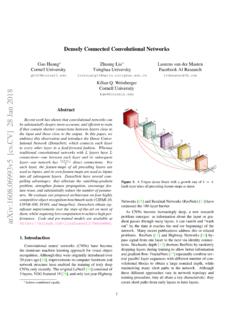

![arXiv:0706.3639v1 [cs.AI] 25 Jun 2007](/cache/preview/4/1/3/9/3/1/4/b/thumb-4139314b93ef86b7b4c2d05ebcc88e46.jpg)

![arXiv:1301.3781v3 [cs.CL] 7 Sep 2013](/cache/preview/4/d/5/0/4/3/4/0/thumb-4d504340120163c0bdf3f4678d8d217f.jpg)
![@google.com arXiv:1609.03499v2 [cs.SD] 19 Sep 2016](/cache/preview/c/3/4/9/4/6/9/b/thumb-c349469b499107d21e221f2ac908f8b2.jpg)




